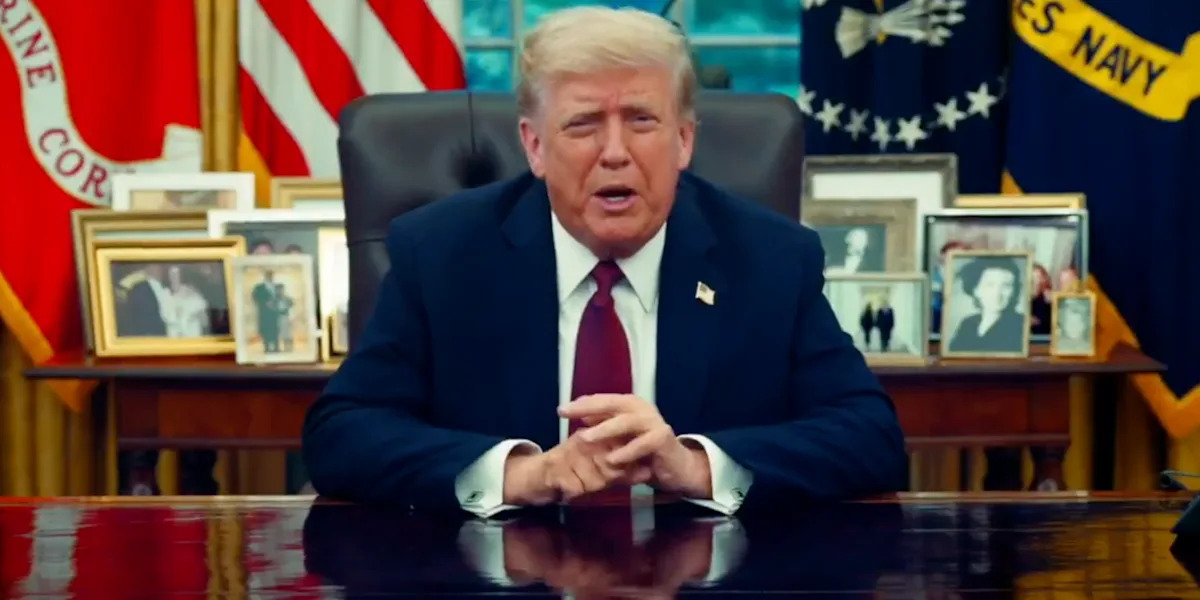In the digital age, the lines between reality and technology are increasingly blurred, particularly when it comes to political communication. The recent incident involving former President Donald Trump’s video addressing the tragic shooting of conservative activist Charlie Kirk has sparked controversy. Some viewers allege that the video utilized artificial intelligence (AI), raising concerns about the authenticity and transparency of the content broadcasted from the White House. A video editing expert, however, has stepped in to clarify the situation, dispelling the AI allegations.
### Background on the Video
The video in question was released shortly after Kirk was tragically shot during a speaking engagement at Utah Valley University. In the video, Trump expresses condolences, praising Kirk as a “patriot” and a “martyr.” However, as the president delivers his message, many viewers noticed unusual glitches, particularly in his hands and shirt. This sparked a wave of speculation on social media platforms, with users questioning whether AI technology had been used to manipulate or enhance the video.
### Social Media Reaction
The video’s reception on platforms like X (formerly Twitter) was overwhelmingly critical. Key observations included tweets such as:
– “Uhhhh, can some of the bigger accounts start talking about the Trump Oval Office address being AI? This is a pretty big deal.”
– “So yesterday was incredibly weird. First, Trump was one of the first people to announce that Charlie had died. Immediately after that, MAGA influencers began pushing a Civil War spin. Then, Trump gave an address that was at least partially AI-generated. Remarkably weird things are happening.”
– “This very much looks like an AI avatar of Trump delivering an official message for the president; his body and hands barely move for the entire video.”
These comments highlight a growing concern among social media users regarding the authenticity of political messaging in the era of advanced technology.
### The AI Misunderstanding
As the discussions about AI usage escalated, TikTok user and video editor Brian Alldridge, (@brianalldridge), emerged to clarify the situation. In a video viewed over 374,000 times, Alldridge explained that the glitches viewers noticed were not a result of AI but rather due to a video editing technique known as the “morph cut.”
According to Alldridge, “You’ve got two separate clips that are stitched together. What the software will do is analyze the difference between those clips and generate new frames to fill the gap.” This smoothing technique has historical significance, having been used in popular media, including the “Star Wars” franchise, to create seamless transitions between takes.
### The Morph Cut Technique
The morph cut is commonly employed to create a more seamless viewing experience without the rough cut edges of traditional editing. This technique is particularly useful when a speaker may have made errors or needed multiple takes to get a coherent message across. By blending two or more clips, editors can create a polished final product while minimizing awkward pauses and filler words.
Alldridge suggested that the technique’s usage in Trump’s video likely contributed to the perception of AI manipulation. Commenters on Alldridge’s TikTok expressed their thoughts, with some affirming the explanation while others raised concerns about the ethical implications of using edited content in an official capacity. One user remarked, “So what happened was he couldn’t do a coherent take, so they had to stitch together a bunch of takes until the message was coherent enough to where they felt it got his point across.”
### Ethical Considerations and Public Perception
The situation raises larger questions about the integrity and authenticity of political communication in an age dominated by digital manipulation. While video editing techniques like morph cuts have legitimate purposes, the fact that they are being used in official White House content leaves room for interpretation and skepticism.
Critics argue that regardless of the technique used, the fact that digitally altered videos are being disseminated as part of the official record is troubling. The concern is not just about what technology was employed but the broader implications of using edited content to shape political narratives.
Moreover, as political figures increasingly utilize video as a primary communication tool, the responsibility for maintaining transparency and authenticity becomes even more critical. Voters deserve to see unfiltered, honest messages from their leaders, not content that has been manipulated to fit a particular narrative.
### The Future of Political Messaging
As political communication continues to evolve alongside technological advancements, it is essential for leaders to responsibly navigate the complexities of digital media. The demand for authenticity in a world filled with deep fakes and AI-generated content is becoming increasingly vital. Political figures and their teams must recognize that the perceptions surrounding their messages can significantly impact public trust and engagement.
While the morph cut may be a standard editing technique, it serves as a reminder of the lengths to which political teams may go in their pursuit of polished presentations. Transparency, clarity, and honesty must remain at the forefront of their efforts to reach constituents.
### Conclusion
The whirlwind surrounding Trump’s video about Charlie Kirk showcases the complexities of modern political communication. While video editing techniques can improve the quality of public addresses, the potential misinterpretations and ethical dilemmas must be navigated with care. As we progress into an era where AI and digital manipulation are commonplace, maintaining public trust and clear communication will be crucial for all political figures. The discourse around this incident underscores the need for ongoing dialogue about ethics in political messaging and the responsibility that comes with it.
Ultimately, as consumers of digital media, we must remain vigilant and discerning, ensuring that we engage critically with the content presented to us, recognizing the implications of technology in shaping our understanding of reality.
Source link










